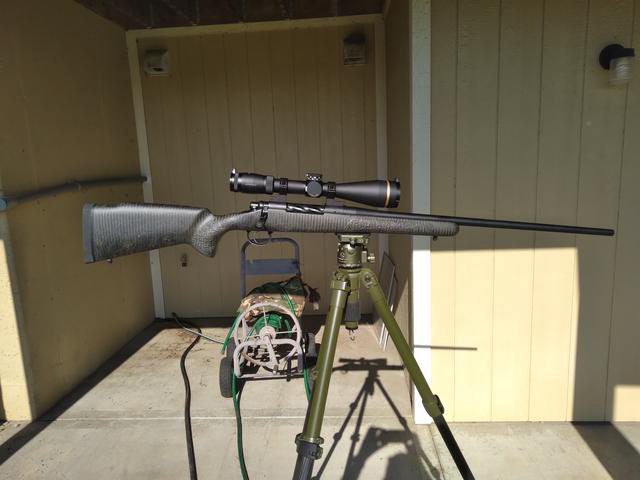I'm still deciding on a stock. I've read and re-read this thread a bunch of times, and I've done a fair bit of other research regarding stocks. I even went down the rabbit hole over at Rokslide and the reason behind that ugly Rokstock they and Unknown Munitions developed. (Apparently the ideal big game hunting rifle is a Tikka T3x in 223 shooting 77 grain TMKs, a SWFA fixed 6 scope, and a Rokstock---but I digress). But, I'm still confused about stock shape/design features and what they are intended to do. At least to the uninitiated, some information that's out there seems to be contradictory.
Forget for a minute the weight of the stock or the materials it's made out of. I want to focus on the shape and the why behind the shape. And I'm mostly interested in recoil mitigation and shooting from non-prone field positions. I will be using a scope with an objective not larger than 44mm.
@Varminterror recommended earlier a Manners EH1 or a similarly shaped McMillan stock. I read lots of folks recommend the Manners EH1 in particular, expecially folks shooting at longer distances. A cheaper but similar option might be Stocky's
Carbon VG2, or B&C's
long range hunter. Below is another picture of the Manners, which seems to be the cream of the crop for this type of stock:

So, this stock has a flat comb that's inline with or maybe a bit above the boreline (i.e., the comb is relatively high). Also, the butt pad comes all the way up to the comb (it doesn't "drop off" like a monte carlo design or the design below). It has a vertical grip. And the toe line (bottom) is not super-steep but it's not flat either. These stocks are often marketed as for "long range" hunting. That's not me, especially not with the rifle I'm currently working on. But . . . why is this a "long range" stock? Is there something about the desing of this stock that makes it hard to use for offhand or positional shooting (think sitting and shooting off a pack frame)? Life is full of tradeoffs. What is this stock design trading in order to gain it's "long range" moniker?
Compare and contrast with a stock with a raised comb but no cheek piece. An M40 style, or Grayboe's Terrain are examples of this style:

Here, the comb appears to be roughly the same height as the style above, but instead of the buttpad coming up to the comb it drops off and is lower. What does this do? I've read that it creates a fulcrum that increases muzzle rise and thus perceived recoil, but I've also read that this type of comb (or maybe a monte carlo cheek piece?) reduce felt recoil. Which is it? What is the tradeoff between having the butt pad come up to the comb vs. having a drop off from the raised comb down to the butt pad? When might a shooter want one style over the other? Is this style easier to shoot offhand for some reason?
Finally, we have what I consider to be a classic sporter stock. Seemingly everyone makes one. Here's the Grayboe Outlander as an example:

It's simple. It's classic. The comb may or may not be too low for comfortable use with a scope. When does one want a stock shaped like this versus one shaped like the Terrain or Manners? Is it going to handle recoil better or worse? Will it be quicker to shoot offhand? Or is this purely a looks and feel kinda thing?
In sum, I'm trying to identify the stock shape/design characteristics that make a stock good at mitigating recoil and being easy to shoot offhand and in non-prone field positions when using a magnified optic. Your continued input and experience are greatly apprecaited.








